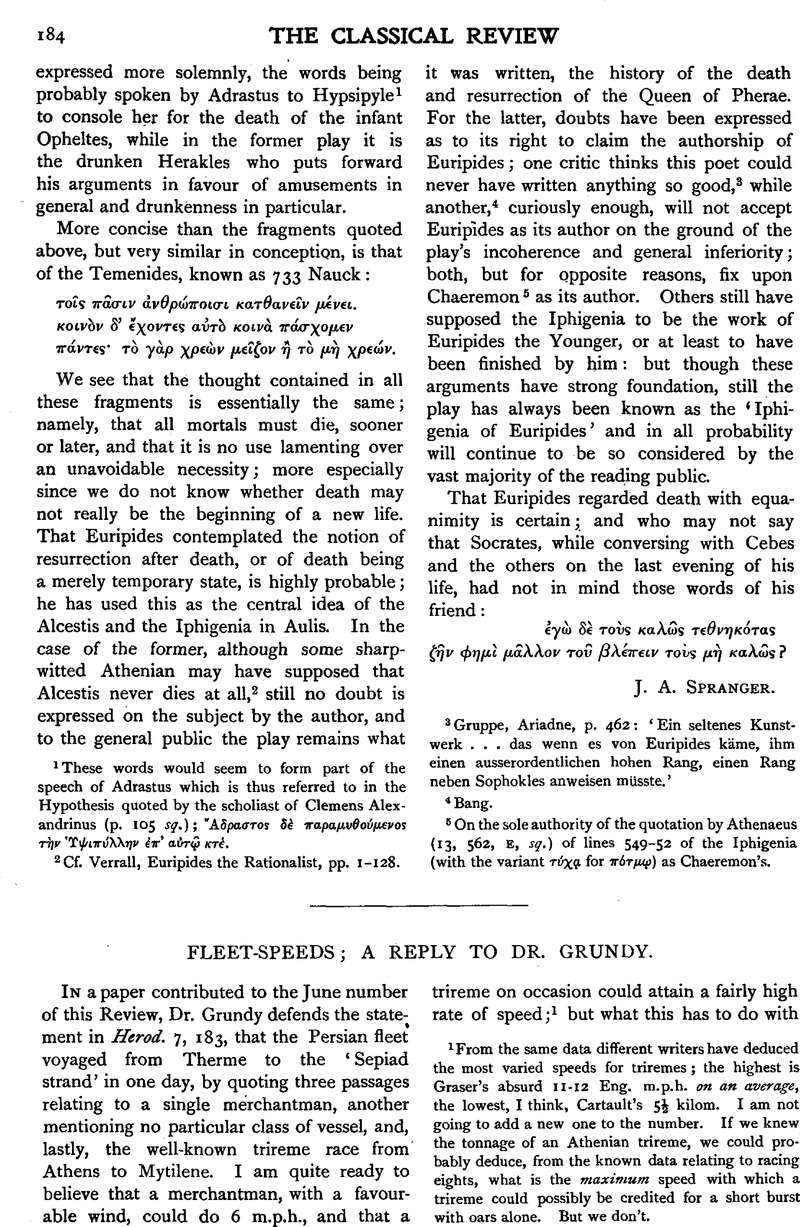No CrossRef data available.
Published online by Cambridge University Press: 27 October 2009

page 184 note 1 From the same data different writers have deduced the most varied speeds for triremes; the highest is Graser's absurd 11–12 Eng. m.p.h. on an average, the lowest, I think, Cartault's 54½ kilom. I am not going to add a new one to the number. If we knew the tonnage of an Athenian trireme, we could probably deduce, from the known data relating to racing eights, what is the maximum speed with which a trireme could possibly be credited for a short burst with oars alone. But we don't.
page 185 note 1 Dr. Macan (2, 411) puts the voyage in June-July. The Etesians do not blow till August.
page 186 note 1 P. 327, note. ‘A distance … of one hundred and twenty miles in fourteen hours of daylight, over eight miles an hour.’
page 185 note 2 I have no large-scale chart here, but such maps as I have agree with the distance as given by Dr. Macan (on 7, 183), ‘about 900 stades.’ I take the stade as 606¾ feet. I note with interest that Dr. Macan (l.e.) thinks the voyage took more than a day; ‘it must have been the deliberate plan to rest a night at sea.’